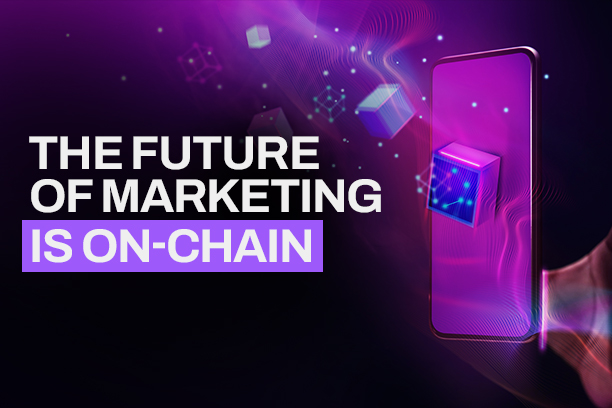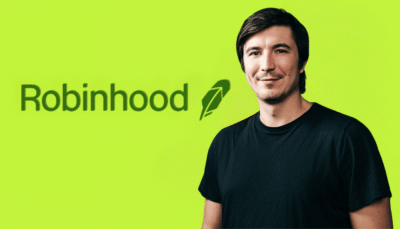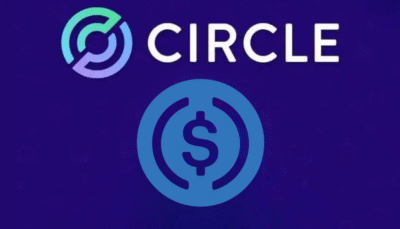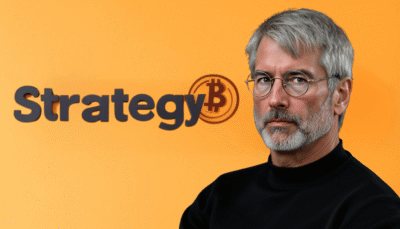In a world where advertisers are bleeding billions to fake clicks, vague impressions, and opaque algorithms, a quiet revolution is unfolding. It’s not being led by ad agencies or big tech—it’s being built by Web3 engineers, smart contracts, and creators tired of chasing invoices. At the center of this shift is a new paradigm: on-chain, incentivized marketing, where performance is measured, verified, and paid for—automatically.
Morgan Kuphal, co-founder and CTO of Tunnl, is one of the builders ushering in this new era. His story is a familiar one to anyone who has tried to run influencer campaigns: the creators want upfront payment, but small brands can’t afford to gamble. Even when deals go through, performance is spotty, reporting is unreliable, and ROI is murky at best.
“I had this experience with that e-commerce company I was running through college,” Morgan recalled on The CoinRock Show.
“I always wanted to leverage influencer marketing. But if you try to do that, you reach out and they’re like, okay, we demand, you know, X amount upfront payment. And that was just a risk I couldn’t take”
This breakdown in trust lies at the heart of today’s marketing dysfunction—and it’s exactly where Web3 has the chance to fix things.
The Creator Economy Has a Trust Problem
On the surface, the creator economy looks like a vibrant marketplace. Billions are spent on influencer marketing each year, with brands eager to tap into engaged, loyal audiences. But behind the scenes, the system is riddled with inefficiencies:
- Brands don’t trust creators to deliver
- Creators don’t trust brands to pay
- Agencies act as middlemen, eating up margins
- Metrics are often inflated or unverifiable
This isn’t just annoying—it’s expensive. According to Juniper Research, advertisers are expected to lose over $100 billion to ad fraud by 2025. Meanwhile, smaller brands and creators struggle to build consistent, trust-based relationships.
What Web3 offers is not just decentralization—but automation and programmable trust. By using smart contracts and oracles, parties can now transact on predefined terms—escrowing funds, verifying delivery, and executing payments based on real, on-chain data.
Engagement-as-a-Service: Marketing’s New Growth Lever
Tunnl is pioneering a new category, Morgan calls Engagement-as-a-Service (EaaS). The idea is simple, yet transformative: brands define content requirements and fund a reward pool; creators claim the deal, create and post the content; an AI oracle verifies the post against campaign criteria; and payments are released based on real engagement metrics like impressions, follower quality, and performance.
“I think one of the biggest shifts is that influencer marketing was super powerful because of its authenticity,” Morgan said.
“But the jig is up at this point… When you launch your campaign, creators will instantly get notified, and they can now quote and share your content and engage, sharing that with their audience. And then finally, they submit their content that shares your post. We use an AI Oracle to verify it, then automatically distribute payment after some holding time”
Compare this to the current model, where creators may get paid based on vanity metrics or where engagement is often unverifiable. EaaS flips the script by making marketing performance measurable, transparent, and automated.
This model also eliminates one of the biggest pain points in the creator economy: manual campaign management. With on-chain marketing, there are no spreadsheets, no follow-ups, and no wondering if someone hit their deliverables. The contract knows. The data knows. And it pays accordingly.
Programmable Marketing: The Rise of the On-Chain Growth Stack
What makes this shift so powerful isn’t just the trust element—it’s the programmability. In Web2, marketing tools are centralized, black-box systems. In Web3, campaigns can be deployed like software.
- Want a global campaign that rewards TikTok creators based on location-specific reach? Program it.
- Want to target high-engagement Twitter accounts with 10K–50K followers? Program it.
- Want payments to scale based on performance and longevity of impact? Program it.
Through oracles and smart contracts, brands can launch marketing campaigns that operate 24/7, without human oversight—and without relying on Meta or Google. Every impression, engagement, and payout is verifiable and immutable.
“I think being able to say, hey look, I want to pay a little bit of money and make this happen a lot faster, it makes a lot of business sense for a lot of people.”
This is not just theory. Since launching Tunnl’s public beta in April 2025, over 2,100 users have onboarded, $130K in volume has flowed through the platform, and 18 campaigns have been executed—entirely on-chain.
The New Marketing Stack
What Tunnl and others are building points to a bigger truth: Web3 marketing isn’t just a niche use case—it’s the next infrastructure layer for global brand growth.
Think of it like the evolution from on-premise servers to the cloud. Marketing, until now, has been siloed, human-dependent, and full of friction. Now it’s moving toward code, transparency, and permissionless access.
And the cultural implications are just as large. In the old world, creators had to beg for deals. In the new world, they claim campaigns, perform, and get paid based on what they deliver—not who they know.
This isn’t just a better way to run campaigns—it’s a better way to build brands. One that prioritizes performance, transparency, and aligned incentives. And it’s coming faster than many realize.
“I realized that actually building a general-purpose infrastructure to accomplish this was going to be easier than building specific use cases,” Morgan revealed about his Engagement-as-a-Service venture.
“Because if you build a specific use case, it kind of changes over time. If you build general infrastructure that you can then build on top of, that is really what I think kind of sets the project apart”
On-Chain Marketing Is the Trojan Horse of Web3 Adoption
Most people won’t adopt Web3 because of DeFi or NFTs. They’ll adopt it because it works better than what they had before.
For marketers drowning in complexity and fraud, on-chain campaigns offer clarity. For creators, they offer freedom. And for founders like Morgan Kuphal, they offer a shot at rewriting the rules of the internet—starting with how attention is bought and paid for.
As trust in legacy platforms erodes and performance demands grow sharper, it’s becoming clear: the future of marketing isn’t social. It’s incentivized, verifiable, and on-chain.





